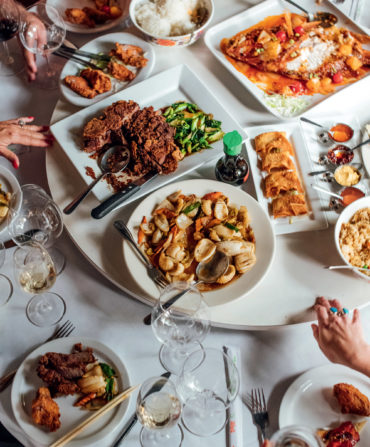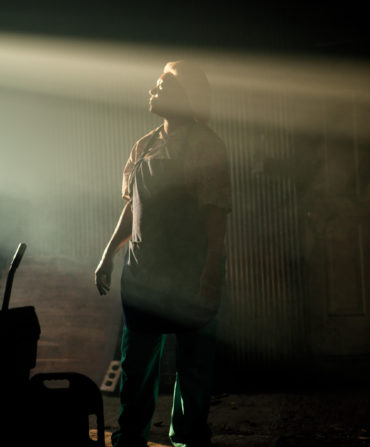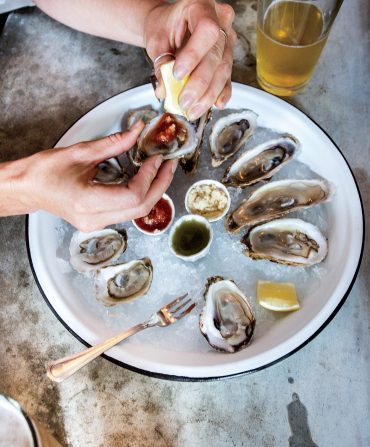“I miss the world of going out to eat,” texted my friend Bill Joyce, for whom I have great affection born of big nights at small tables. “I miss the warm anticipation of food I’ve never tasted… I miss sitting across from people I enjoy with the same anticipation.”
As Americans return to restaurants, we navigate a fog of emotions. Bearing expectations for lunches to come, stoking memories of dinners past, we arrive hungry and anxious. I’m hungry for chef Vishwesh Bhatt’s okra chaat, a toss of fried pods and roasted peanuts, mixed with cilantro and tomato, served at the high-top counter at Snackbar, our local here in Oxford, Mississippi. I’m hungry for pitmaster Helen Turner’s pork shoulder sandwiches, smelling of hickory and history and leaking hot sauce, passed through the tiny order window at Helen’s Bar-B-Q in Brownsville, Tennessee. And I’m anxious about, well, everything.

If there’s an Easter egg hidden in the gloom, it’s a gift of perspective. You may read this column to help you determine where to eat next. But in the midst of this long pause, no matter my hungers, I recognize that I write it to catalogue the contentment I feel while tucked into a comfortable booth, to document the kindness I read on the faces of waiters, and to mark the realization that, in the right moment at the right restaurant, I want for nothing and want to be nowhere else.
I go to restaurants to take advantage of the two-hundred-plus-year-old promise of the institution: We will restore you. I arrive to eat well and to witness humanity at its best. The other night, inspired by a dinner a couple of years back at Lucky Palace, the elegant Chinese restaurant set in the rear of a tawdry Bossier City, Louisiana, motel, I wok-fried egg foo yong patties and opened a good bottle of white Burgundy. Instead of lacquered pork, cooked in the Malaysian style of proprietor Kuan Lim’s youth, I studded my omelets with hunks of pork shoulder, backyard-smoked in the style of my Georgia youth. It was flat-out delicious. But our home dinner was not as momentous as the one I had enjoyed at Lucky Palace, because Kuan Lim wasn’t there, limping the dining room, talking up his latest cellar acquisitions, broadcasting that a fight with cancer won’t dim his bright generosity and disarming grin.
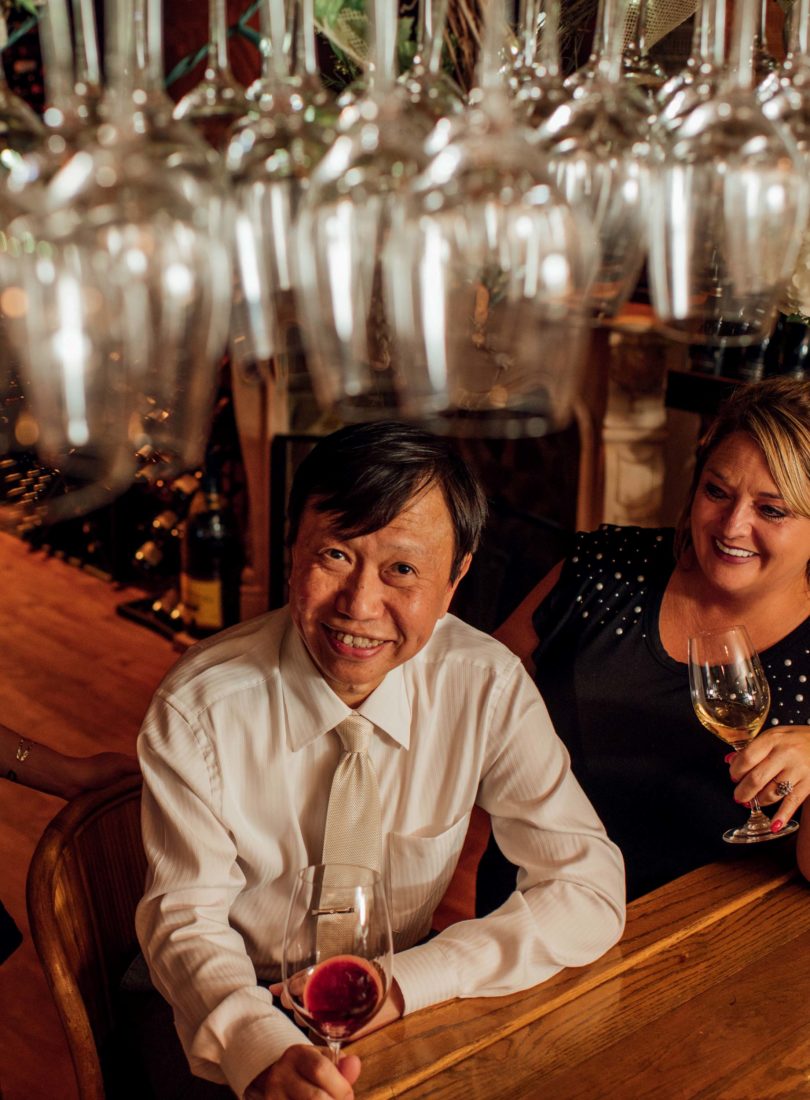
Most of the moments I recall at restaurants are discreet and quiet. Waiters and hosts are usually the heroes. But there are exceptions. I remember a date night with my wife, Blair, ten years back in Macon, Georgia. Dinner revolved around a flabby duck breast and a pallid onion soup, delivered to our table with faux French pomposity. The affair was so depressing that, when our waiter left to fetch dessert, I tucked and rolled and somersaulted across the dining room, just to pump helium into a deflated night. We endured the sorry duck, Blair said to me as we walked to our car, but we couldn’t endure the dour mood.
When I go out to eat, I go looking for joy. More than dishes, images lodge in my head. Some I capture on my phone, like the shot I took on a December pilgrimage to Doe’s Eat Place, the fabled Greenville, Mississippi, steak house. After a long dinner with friends, eaten beneath a mounted goose in a wood-paneled room, we stood in the parking lot, looking at the onetime grocery’s moonlit facade, reliving our triumphs, tapping again the dopamine that a good night releases. Imagine a photograph that’s three-quarters drunk and smeared with beef fat, and you get the mood. In May, mourning nights like that one, I began using that photo as my Zoom background.
Listen to R.E.M. a lot, as we do around our house, and you hear shards of found poetry that sound like they were borrowed from overheard conversations. If life is an encyclopedia of small moments, as Michael Stipe’s lyrics suggest, a big camera roll of quick snapshots, then restaurants and bars are social memory banks. They reflect our lives like fun-house mirrors. Return to a favorite restaurant, slide into a corner booth, indulge in the smells and sights and sounds, and you gain access to what you left behind.
I shot another blurry photo two years back at Kimball House, the oyster and cocktail citadel in Decatur, Georgia. It was closing time. A group of bartenders stood behind a carved wood bar. Just beyond, one had cued a xylophone, and the rest had begun to sing “How dry I am,” a four-beat plaint that, in that sweet moment, marked the end of our night—and the promise that we would soon return.
Bill Joyce and I last dined together in New Orleans last November. He had not been thinking specifically of that night when he texted me. But I soon was. At Upperline, JoAnn Clevenger’s Uptown tree house of a restaurant, we had begun a late dinner with Sazeracs and ended with port after a detour for panéed drum, buried in a drift of lump crab. While we waited for that port, I lingered at the stairs, looking down into the lower dining room, where JoAnn tended to the only other table of diners.
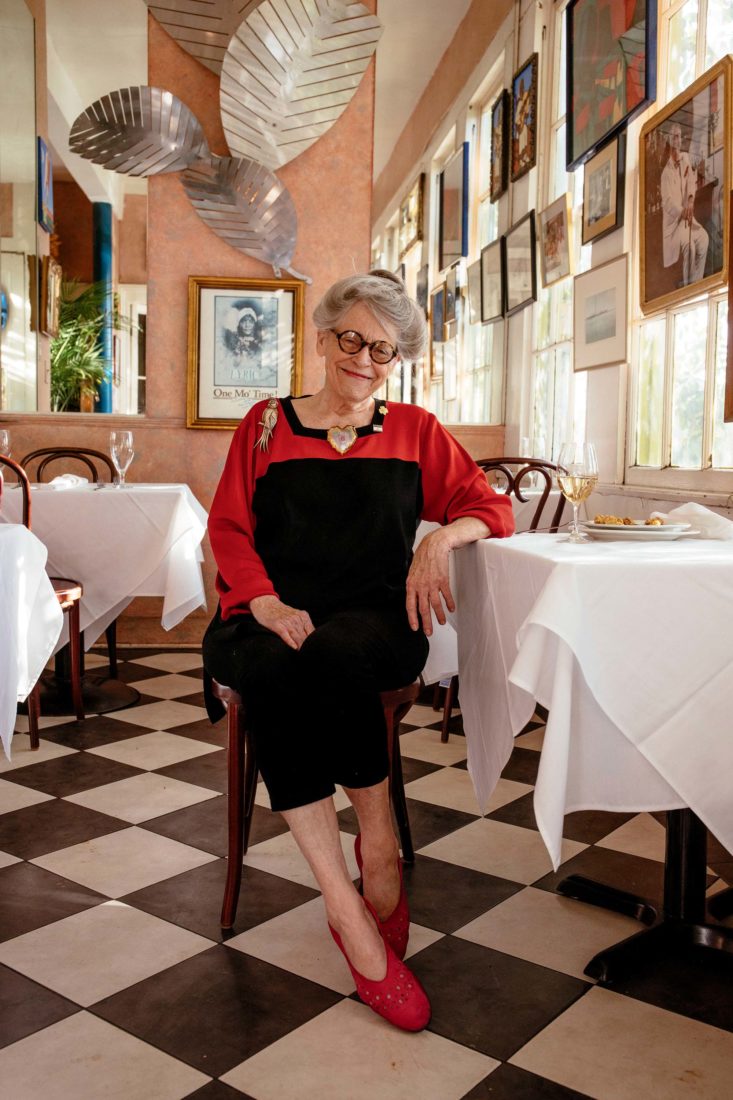
When she caught me looking, she smiled and pirouetted, gray hair in a beautiful cyclone bun, hands high in a salute to joy. I snapped a quick shot, to which I have returned often during this long and fitful pause. That photograph reminds me of what it takes, even at the end of a long night, to give your life to hospitality. And it reminds me of what great restaurants give to those of us who love them.
This article appears in the August/September 2020 issue of Garden & Gun. Start your subscription here or give a gift subscription here.


